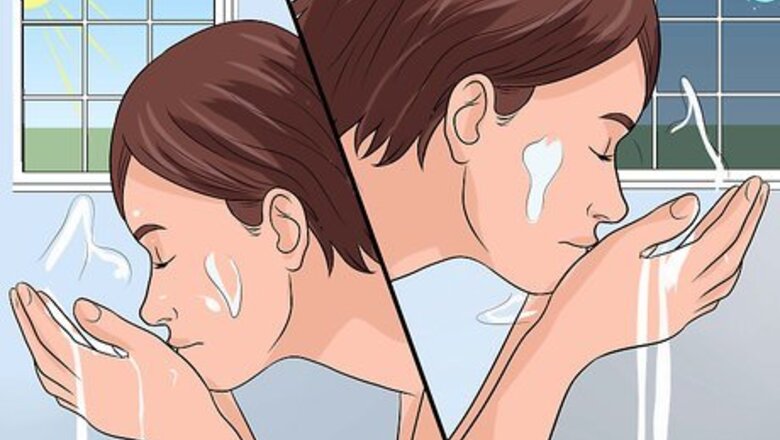
views
Remedies for Making Pores Smaller
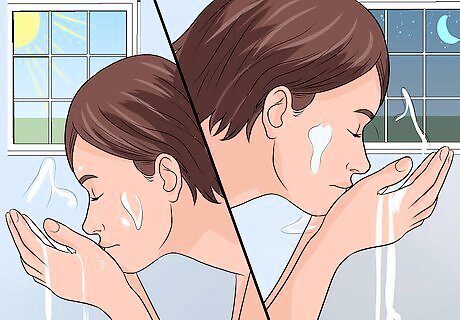
Wash your face every day, being careful not to overwash. Pores enlarge when they become clogged with dirt, oil, or bacteria, causing them to become inflamed. Washing your face regularly but not too often — once in the morning, once at night — will help keep your pores looking smaller and feeling better.

Apply ice cubes to your face. Place the ice cubes gently along your pores for 15 to 30 seconds. This will have a tightening effect on your skin.
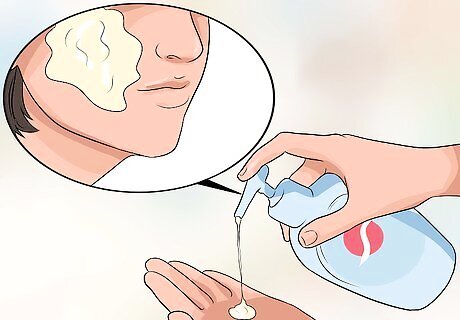
Use a light scrub. A scrub, as opposed to a wash, usually contains very small beads or other massaging implements (think finely ground apricot cores, for example) that assist in unclogging pores. Certain light scrubs can be used nightly instead of face wash. If you're going to use a scrub instead of a wash, leave it at that. Don't wash your face afterwards; it's an either/or thing. Excessive washing of your skin can cause irritation and redness, rendering any gains in pore-reducing virtually useless.

Try a yogurt mask. Plain yogurt contains lactic acid and probiotics, which when applied to the skin, help keep the bad bacteria that causes acne in check, thereby reducing the appearance of pore size. Apply a thin layer of plain yogurt over face and let stand for 5 to 10 minutes. Longer than 10 minutes can irritate the skin. Use only about once a week. As with most masks, less is often more, so don't be tricked into thinking you need to constantly be exfoliating.

Eat healthy. Eat a diet rich in lean proteins, whole grains, fruits and vegetables, and omega-3 fatty acids. Drink plenty of water instead of sugary, caffeine-laden drinks. Avoid excessive milk and dairy, which have hormones that make acne worse. Get plenty of vitamin A, vitamin C, and B-vitamins. Vitamin C can help minimize lines, scars, and wrinkles, while vitamin A acts in a similar way. Oranges produce firmer skin and rebuild collagen, which may contribute to increasing the elasticity of your skin and reducing your pore walls. Tangerines also have this effect.

Use alpha and beta hydroxy acids, or AHAs and BHAs. AHAs and BHAs are chemical, rather than natural, exfoliants. They weaken the binding properties of lipids, which keep the dead skin cells on the outer skin intact even after they should be sloughed off. BHAs are better at really penetrating pores because they're lipid-soluble, meaning they can cut right through the oil or sebum in your pores. Use chemical peels like AHAs and BHAs no more than once or twice a week. Just because you do it more often doesn't mean it's better for your skin. You may need to use these products less frequently if you find it is irritating your skin, causing skin tightness or redness, or if you are using a stronger product. Always consult with your dermatologist before using any of these products.
Remedies for Making Blemishes Less Visible
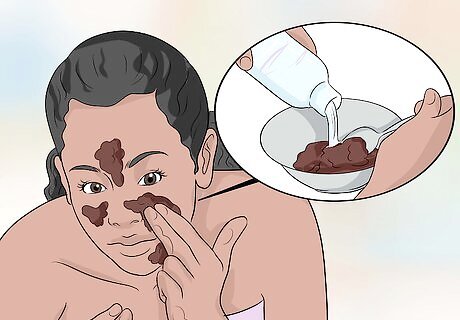
Use sandalwood powder and water to reduce blemishes. Note that there isn't good evidence for sandalwood's effectiveness, but if you want to try it anyway, mix together a paste of sandalwood powder and water, applying to face. Leave for 10 to 20 minutes before rinsing off with cool water. Just be careful because sandalwood can dry out your face.
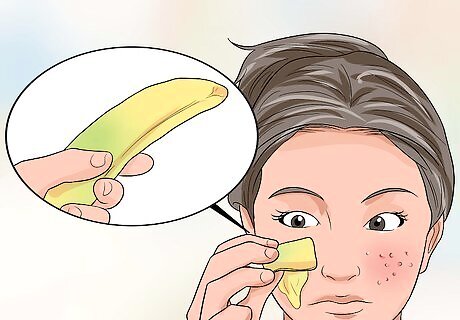
Rub a papaya or banana peel over your skin. Leave for 15 minutes before washing away with cool water. Your blemishes should get smaller and/or less noticeable. Papaya and banana contain the enzymes papain and bromelain in addition to other acids that help minimize the presence of blemishes, though more research needs to be completed to determine whether this is actually an effective treatment.

Use rosehip seed oil. Rosehip oil can be applied in low doses to the face for 15 minutes every day before washing off with cool water. However, more research needs to be done to determine the effectiveness of rosehip oil.
Medications and Professional Treatments for Pores and Blemishes

Take prescription medication. Your dermatologist or doctor will be able to point out medications, both topical and in pill form, which may be able to fully treat your breakouts in a matter of weeks.

Try dermabrasion. Dermabrasion is basically when a doctor scrapes the top layer of skin, or epidermis, with a very fine diamond bur or wire brush, thereby "softening" the irregularities in the skin. It is good for blemishes or scars caused by acne. Try microdermabrasion. Like dermabrasion, just with a lighter implement. A soft abrasive is moved over the epidermis, softening the blemishes and encouraging collagen production.
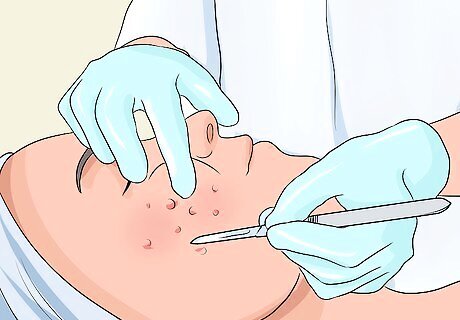
Try dermaplaning. Similar to dermabrasion, except the dermatologist removes the outer layer of skin not by scraping the skin away, but by "planing" it away with a series of back-and-forth oscillations.

Zap blemishes away. Your local aesthetician will have a high-frequency machine that uses a current to kill the bacteria that causes inflamed blemishes. A small electrode is run over the blemish and will be noticeably smaller in a few hours. You can also purchase a Zeno device, which is the same thing as these high-frequency machines. The only difference is that they are handheld and battery-operated.
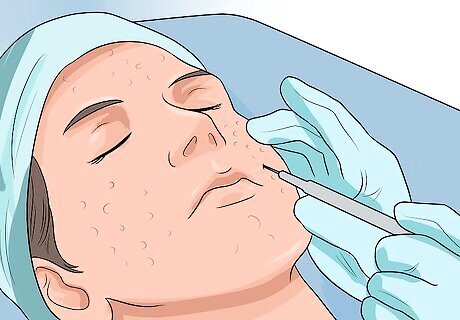
Get a cortisone injection. Your dermatologist can inject cortisone into a blemish, which will reduce swelling within a day. However, this is typically seen as a last resort method for when your skin isn't responding to other treatments.












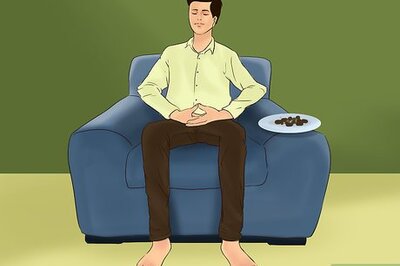




Comments
0 comment